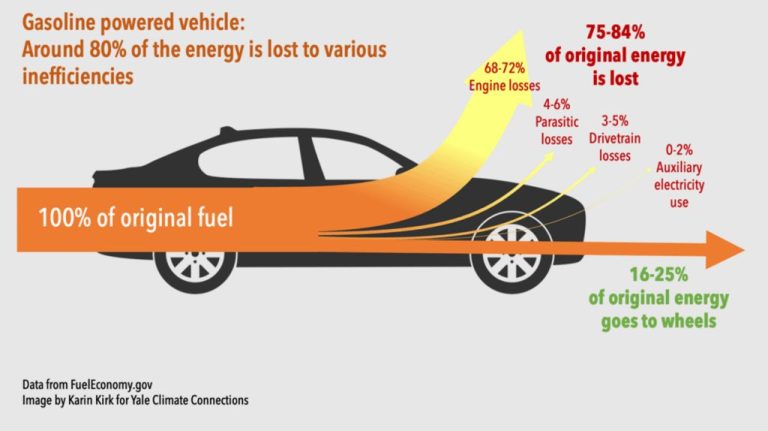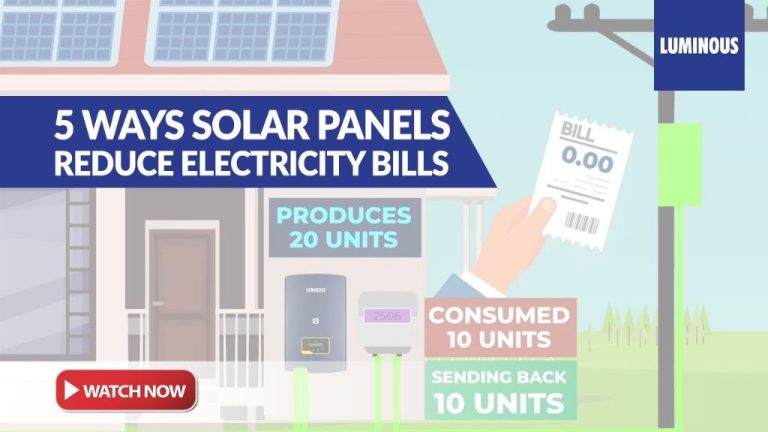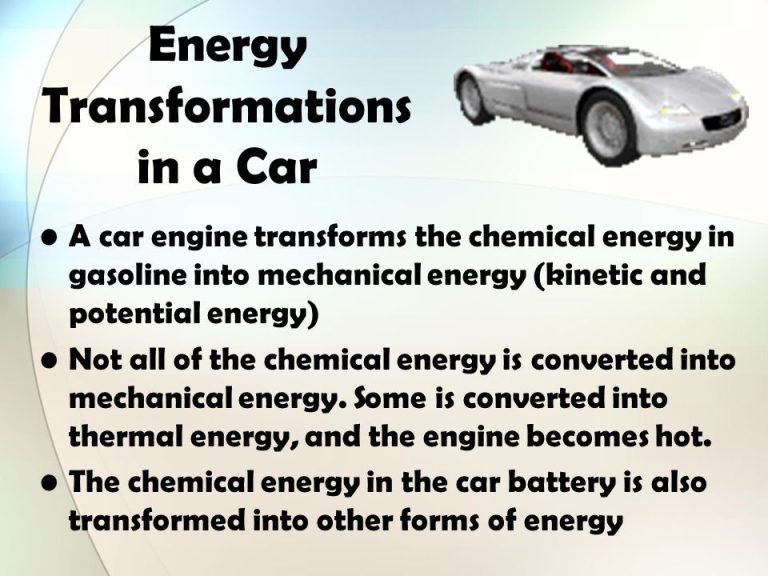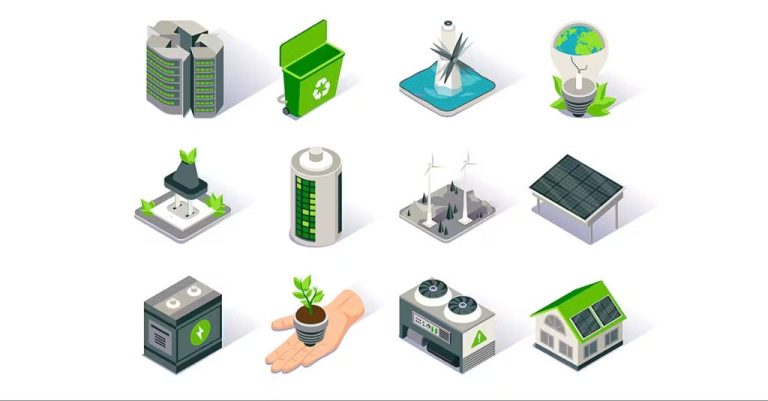What Are The Alternative Ways To Get Electricity?
Alternative energy refers to energy sources that are renewable, sustainable, and environmentally friendly. Alternative energy provides an alternative to traditional fossil fuels like coal, oil, and natural gas, which are nonrenewable and major contributors to climate change and pollution when burned (Source). As concerns grow over the environmental impacts of fossil fuels, there has been increasing interest and investment in alternative energy sources. Alternative energy sources can help diversify energy supply, enhance energy security, reduce dependence on imported fuels, and create environmental sustainability. Some of the most common alternative energy sources are solar, wind, geothermal, biomass, hydroelectricity, tidal, and wave power. It is important to explore and invest in alternative energy options to build a clean, renewable energy system for the future.
Solar
Solar panels, also known as photovoltaic (PV) panels, convert sunlight into electricity using the photovoltaic effect. When sunlight hits the solar cells in a panel, it knocks electrons loose from the atoms in the cells. The electrons flow through the cell, producing electricity. The electricity generated can be used to power homes, buildings, and devices or fed back into the grid (Source).
Solar panels typically consist of silicon cells, a glass casing, metal framing, and wiring. The more sunlight that hits a panel, the more electricity it can generate. Solar panels can be installed on rooftops or ground-mounted systems. Arrays of solar panels are connected together to produce more electricity. The electricity produced by solar is direct current (DC) and must be converted to alternating current (AC) using inverters to be compatible with home appliances and the grid (Source).
Some key factors that impact solar panel productivity include panel efficiency, orientation, shading, and local weather patterns. More efficient solar panels can convert a greater percentage of sunlight into electricity. Panels facing south (in the northern hemisphere) receive the most direct sunlight. Shade from trees or buildings can significantly reduce output. Locations with more sunny days per year will generate more solar electricity (Source).
Wind Energy
Wind energy is harnessed by using wind turbines to generate mechanical power from the kinetic energy of wind, which is then converted into electricity. Wind turbines consist of blades that rotate when wind blows past them. The blades are connected to a drive shaft that turns an electric generator to produce electricity. The amount of electricity produced depends on the turbine’s size and the wind’s speed. According to research, global wind power capacity reached 743 gigawatts in 2020.
Wind power is considered a clean and renewable energy source since wind will continually replenish itself. Wind turbines can be built on land or offshore in bodies of water. Large wind farms consist of many individual wind turbines that are connected to the electric power transmission network. The generated electricity is fed into distribution lines for delivery to homes, businesses, schools, and other facilities.
While wind power emits no air pollution or greenhouse gases, some challenges include needing large areas of land, impacts on wildlife, and variability in energy production depending on wind availability. However, wind energy helps diversify the energy supply and reduce dependence on fossil fuels. With innovations in turbine technology and increasing capacity, wind power is poised to supply a substantial portion of the world’s electricity.
Geothermal
Geothermal energy utilizes heat from the earth’s core to produce steam that can generate electricity. Water is pumped down into hot rock reservoirs deep below the earth’s surface where it is heated to temperatures upwards of 700°F. The resulting steam from the heated water is used to spin turbines in geothermal power plants, generating electricity that is then fed into the electrical grid.1
Some of the top countries utilizing geothermal energy include the USA, Philippines, Indonesia, Mexico, Italy, Iceland, New Zealand, and Japan.2 The USA leads globally, generating over 14,000 GWh/yr of electricity from geothermal sources. Other applications of geothermal energy include heating buildings, greenhouses, fish farms, and district heating systems. Countries with substantial geothermal resources have significant potential to expand their utilization of this renewable baseload energy source.
Hydroelectric
Hydroelectric power generates electricity by harnessing the energy from flowing water. Typically, dams are constructed to control water flow and create reservoirs. The water in the reservoir has potential energy due to its elevation. When water is released from the reservoir, it flows through turbines connected to generators to produce electricity. The amount of electricity that can be generated depends on the volume of water flow and the height of the water’s fall. According to this source, as of 2020, hydropower accounted for over 16% of global electricity production capacity, making it one of the leading renewable energy sources worldwide.
Some of the largest hydroelectric facilities are located in China, Brazil, Canada, and the United States. The Three Gorges Dam in China is currently the world’s largest hydroelectric power station with a capacity of 22,500 megawatts. While most hydroelectric dams are built on rivers, pumped-storage hydroelectricity uses reversible turbine-generators to store energy by pumping water uphill to a reservoir during periods of low electricity demand. The stored energy can then be released to produce electricity during peak demand times.
Advantages of hydroelectric power include its renewable nature, low operating costs, and ability to quickly adjust output to meet demands. However, building large dams can negatively impact surrounding ecosystems and communities. Technological advances are leading to more sustainable hydroelectric projects with reduced environmental impacts.
Biomass
Biomass energy is generated by burning organic matter such as wood, plants, algae, agricultural waste, urban waste, and animal waste to produce heat and electricity. Some of the pros of using biomass for energy include:
- It’s a renewable source of energy since plants and organic matter can be regrown (Source: https://www.solarreviews.com/blog/biomass-energy-pros-and-cons)
- It’s generally a reliable and consistent energy source as biomass stocks can be stored and used when needed (Source: https://www.bioexplorer.net/biomass-energy-pros-cons.html/)
- It can reduce the amount of waste sent to landfills by using agricultural, urban and other waste productively
Some of the cons of biomass energy include:
- Burning biomass emits carbon dioxide, although the emitted CO2 can be recaptured by regrowing plants and organic matter (Source: https://study.com/academy/lesson/biomass-for-renewable-energy-pros-and-cons.html)
- It can be expensive to transport and process biomass into a usable fuel
- Some forms of biomass like wood may be better used for other purposes than energy generation
Hydrogen Fuel Cells
Hydrogen fuel cells produce electricity through an electrochemical reaction, not combustion. Fuel cells combine hydrogen and oxygen atoms across an electrochemical cell similar to that of a battery. Unlike batteries that eventually go dead, fuel cells continue to produce electricity as long as a fuel source is provided.
Hydrogen fuel cells work by feeding hydrogen to the anode of the fuel cell and oxygen to the cathode. At the anode site, a platinum catalyst separates hydrogen atoms into electrons and protons. The protons pass through the electrolyte membrane to the cathode while the electrons travel in an external circuit, producing electric current. At the cathode, the electrons, protons, and oxygen combine to produce water molecules.
Compared to batteries, hydrogen fuel cells can offer higher energy density, but the infrastructure required for producing, transporting, and storing hydrogen is not yet as developed as that for batteries (Source). Fuel cells are being used or tested for vehicles, portable power, and stationary power generation.
Tidal
Tidal power utilizes the rise and fall of ocean tides to generate electricity through the movement of water. As the tide flows in and out, it turns underwater turbines that are connected to generators, producing renewable power. This type of energy relies on the gravitational forces between the Earth, moon, and sun that cause the tides.(PNL Source)
Tidal power stations, called tidal barrages, are built across estuaries with dams fitted with turbines. When the tide flows in, the water flows through the turbine generating electricity. Then when the tide goes out, the turbines are designed to rotate in the opposite direction, continuing to produce power. There are a few major tidal barrage facilities around the world, like the 254 MW Sihwa plant in South Korea.(Planet Energies Source)
While tidal power holds promise as a renewable energy source, there are some challenges. Constructing tidal barrages can be expensive, and they need to be built in areas with large tidal ranges to be effective. Tidal power facilities can also impact marine life migration and ecosystems. Nonetheless, technology improvements may help tidal become a bigger contributor to clean energy production.(Scientific American Source)
Wave
Wave power harnesses the energy of ocean surface waves and converts it into electricity. The theoretical annual energy potential of waves off U.S. coasts is estimated to be up to 2.64 trillion kilowatthours (https://www.eia.gov/energyexplained/hydropower/wave-power.php). Wave energy can be captured through floating or submerged buoy-like devices that use the rising and falling of waves to drive an electrical generator. Other devices are installed on the seafloor to capture the swaying back-and-forth motion for energy production. Some systems use oscillating water column devices with a turbine that spins inside a fixed tube. The water column rises and falls with the waves, driving air up and through the turbine (https://www.nrel.gov/news/program/2023/how-much-wave-energy-is-in-our-oceans.html). Wave power technologies are still in the demonstration phase but offer potential for future energy generation.
Conclusion
In summary, when looking for clean alternatives to traditional electricity generation, there are many alternative energy sources to consider beyond fossil fuels. Solar and wind energy are the most prevalent renewable energy technologies that produce electricity without emitting greenhouse gases. Geothermal and hydroelectric power also provide clean energy from natural sources like the earth’s inner heat and the motion of water. Other renewable alternatives include biomass conversion; hydrogen fuel cells that extract energy from hydrogen; and new innovations like tidal and wave power that harness the motion of the oceans.
While each of these renewable electricity technologies has advantages and some limitations as well, they all provide ways of generating electricity that avoid pollution from fossil fuels. The growth of these alternative energy technologies illustrates how countries, companies and consumers worldwide are seeking cleaner ways to meet electricity demand. As renewable energy continues to become more cost competitive and widely adopted, these technologies are poised to play a key role in the future electricity mix globally.






